WFH Guidelines for the Management of Hemophilia | Virtual Summit 2020
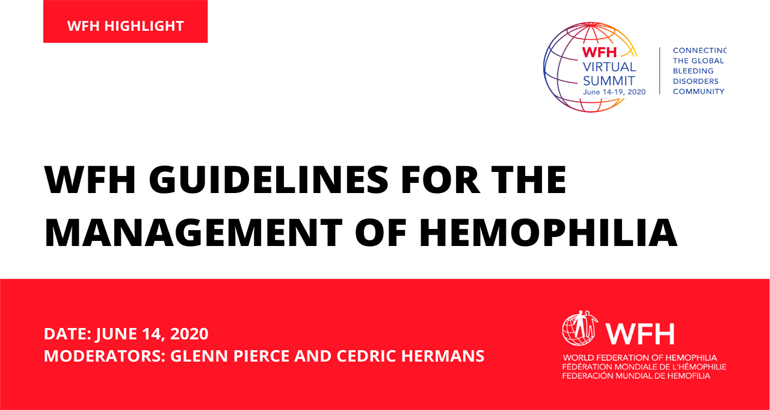
In this session from the WFH 2020 Virtual Summit, Glenn Pierce, Alok Srivastava, Steven Pipe, Manuel Carcao, Margaret Ragni and Johnny Mahlangu present and discuss updates to the WFH Guidelines for the Management of Hemophilia. Discussion topics include hemostatic agents, prophylaxis, inhibitors, and treatment of specific hemorrhages. Click below to access more on-demand Virtual Summit […]
CDC Webinar: Overview of WFH Treatment Guidelines, 3rd Edition

On December 10th, 2020 Glenn Pierce, WFH VP Medical moderated this one-hour webinar in the Public Health Webinar Series on Blood Disorders presented by the CDC. The webinar discussed how the WFH Guidelines for the Management of Hemophilia, 3rd edition provides opportunities to improve the standard of diagnosis and care for people with hemophilia around […]
Exercises for People with Hemophilia – Amharic
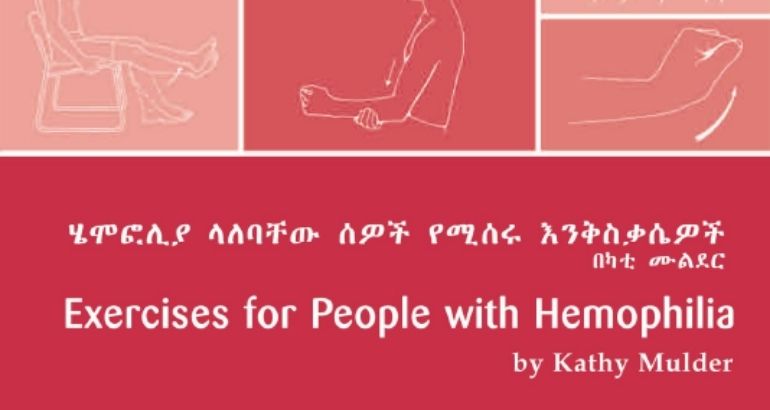
Also Available In: English, Spanish, French, Arabic, Russian, Simplified Chinese This is not an official WFH translation. This resource has been translated with permission by a WFH National Member Organization (NMO), and is shared here with their kind permission. Translating organizations are encouraged to have translations reviewed by local experts, the WFH is not responsible […]
What is Hemophilia? – Amharic

The 2023 edition is available in: English, Spanish, French, Arabic, Russian, Simplified Chinese This edition is also available in: Japanese This edition of the resource has also been translated into the following language, with permission from the WFH, by NMOs: Setswana This is not an official WFH translation. This resource has been translated with permission […]
How to Set Up Chromogenic FVIII and FIX Assays
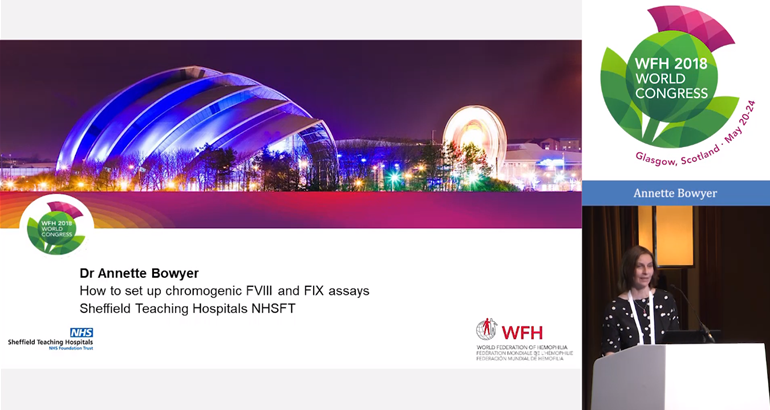
In the Tuesday afternoon session entitled Role of Chromogenic Assays in Hemophilia Diagnosis, Annette Bowyer explains how to set up chromogenic assays for FVIII and FIX, covering technical aspects such as calibration, accuracy, and quality control in the context of these assays, as well as the cost implications of using them appropriately.
Role of Chromogenic FVIII Assays in Hemophilia A Diagnosis

In the Tuesday afternoon session entitled Role of Chromogenic Assays in Hemophilia Diagnosis, Elizabeth Duncan presented a comparison of clotting assays versus the chromogenic assay in quantifying FVIII, highlighting genotype and phenotype discrepancies and reverse discrepancies.
Introduction to Bleeding Disorders
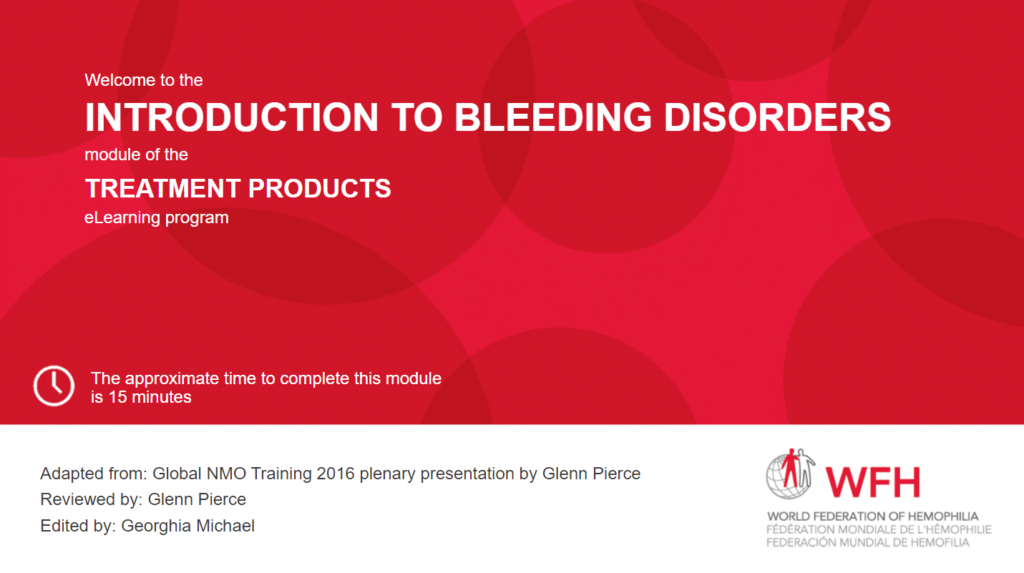
Adapted from: Global NMO Training 2016 plenary presentation by Glenn PierceReviewed by: Glenn PierceEdited by: Georghia Michael This first eLearning module of the Treatment Products program explains how blood clots, how clotting factors work together in the coagulation cascade, what goes wrong in the case of factor deficiency, and how factor replacement therapy works by […]
In-HemoAction Card Game
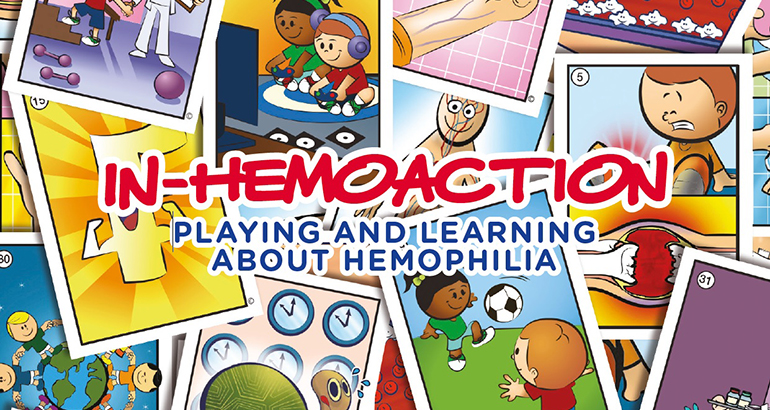
Using the universal language of pictures, children around the world can learn about hemophilia in a fun, easy to understand, and interactive way. The In-HemoAction cards teach children how to prevent bleeds and manage hemophilia. An update of the hugely popular HemoAction game, this edition features additional content covering prophylaxis, inhibitors, bypassing agents, immune tolerance […]
Pathogenic or Not? Classification of genetic variants in haemostasis

In the Wednesday morning lab sciences session on the genetic laboratory for bleeding disorders, Anne Goodeve explains the classification of genetic variants in haemostasis.
Factor VIII Inhibitor Assay – Lab Manual Video
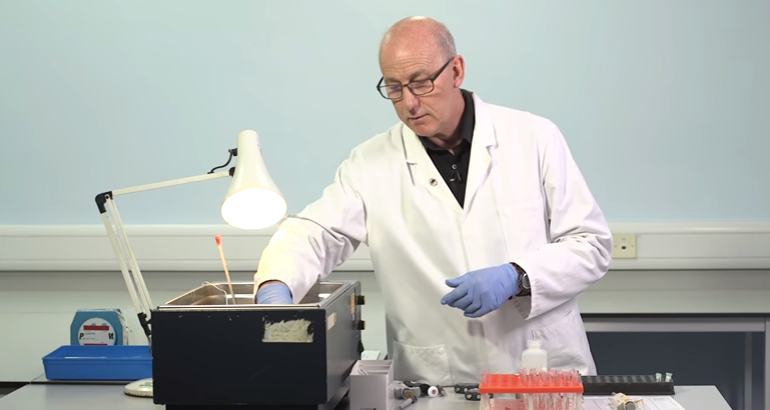
This step-by-step video clearly demonstrates the correct technique for the execution of the manual assay for the presence FVIII inhibitors. Supplementing the Lab Manual written protocol (Section 28), it also explains the theory behind the assay, details the important reagents, discusses the challenges posed by limited resources, and works through the plotting and interpretation of […]
One-Stage Assay of Factor VIII (FVIII) – Lab Manual Video
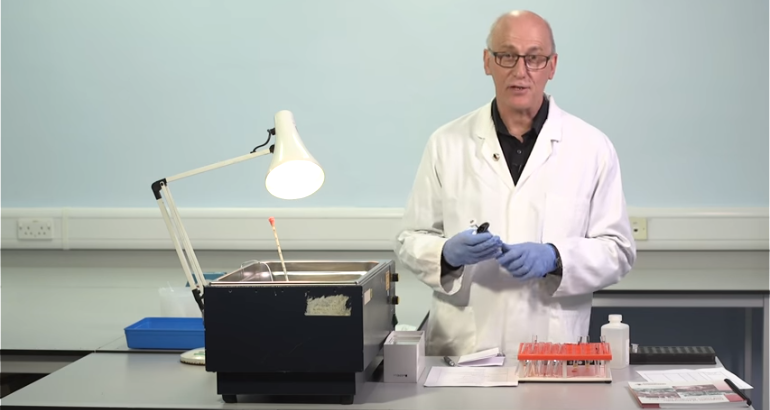
This step-by-step video clearly demonstrates the correct technique for the execution of the most commonly used manual technique in the diagnosis of bleeding disorders: the one-stage assay for FVIII. Supplementing the Lab Manual written protocol (Section 23), it also explains the theory behind the assay, details the important reagents, discusses the challenges posed by limited […]
APTT – Lab Manual Video
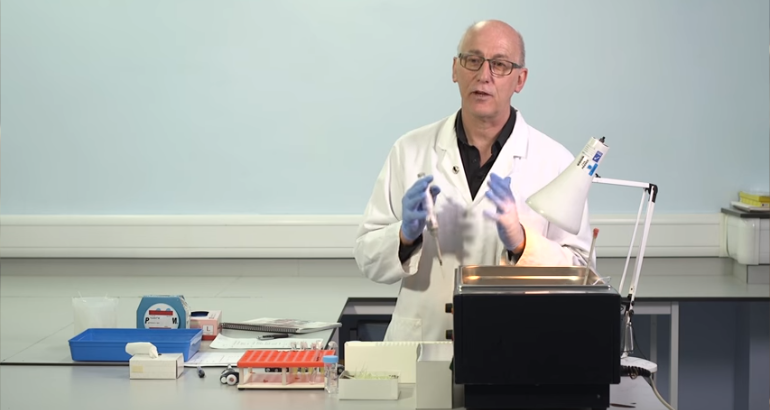
This step-by-step video clearly demonstrates the correct technique for the execution of the fundamental manual technique that constitutes the basis for the most commonly used assays in the diagnosis of bleeding disorders: the activated partial thromboplastin time (APTT). Supplementing the Lab Manual written protocol (Section 13), it also explains the theory behind the assay, details […]
